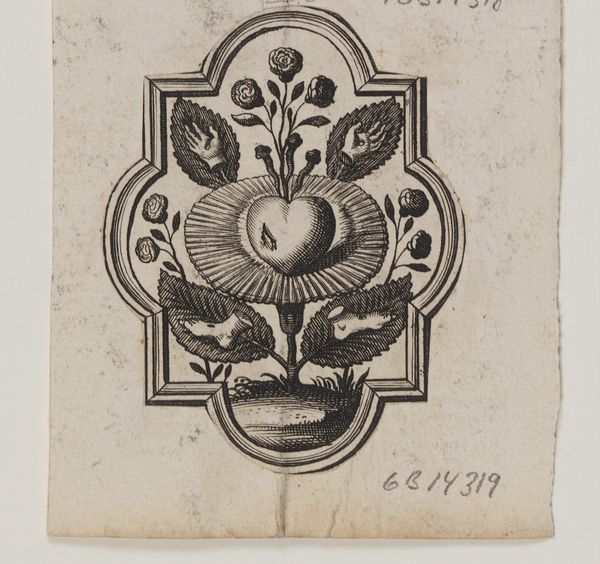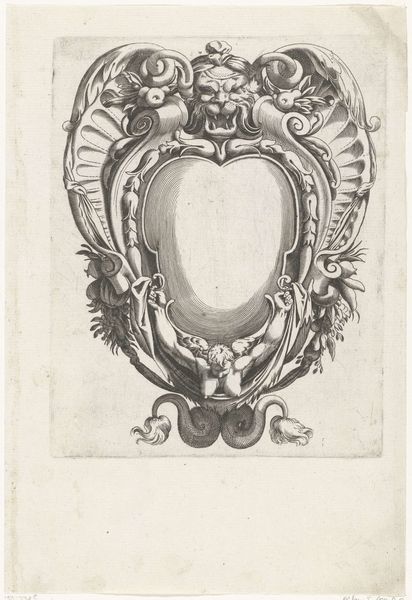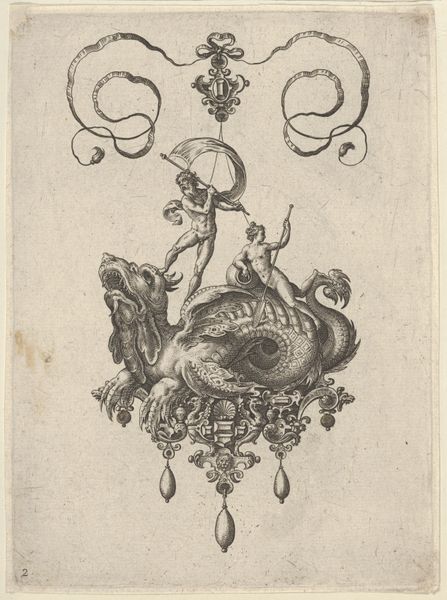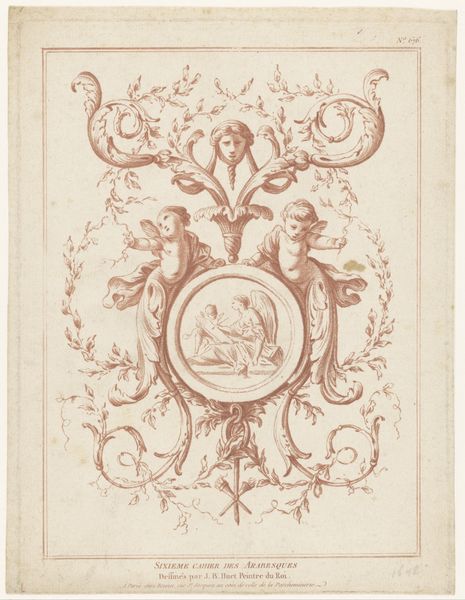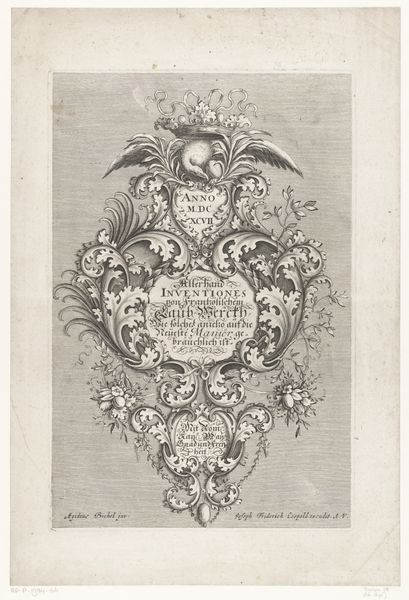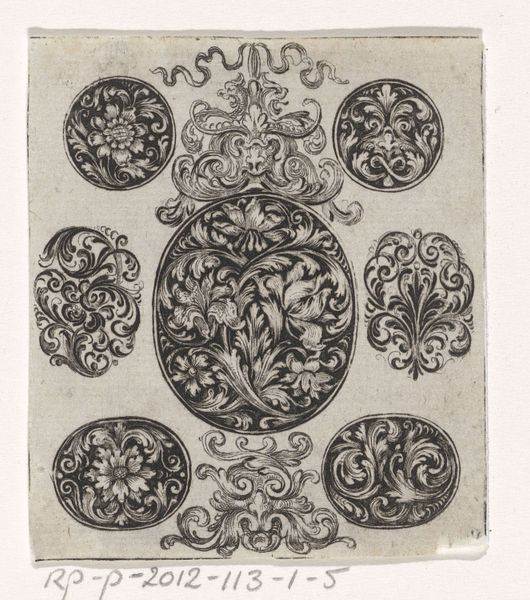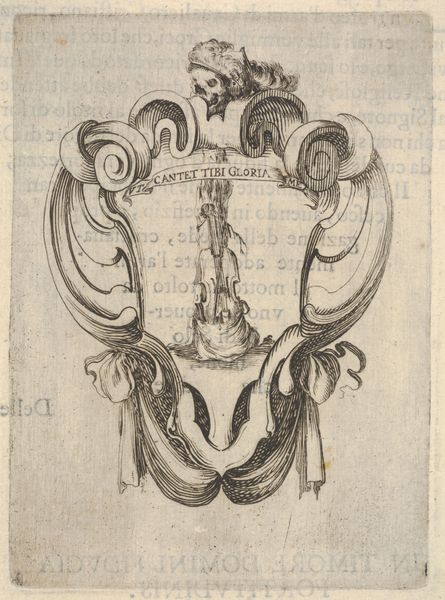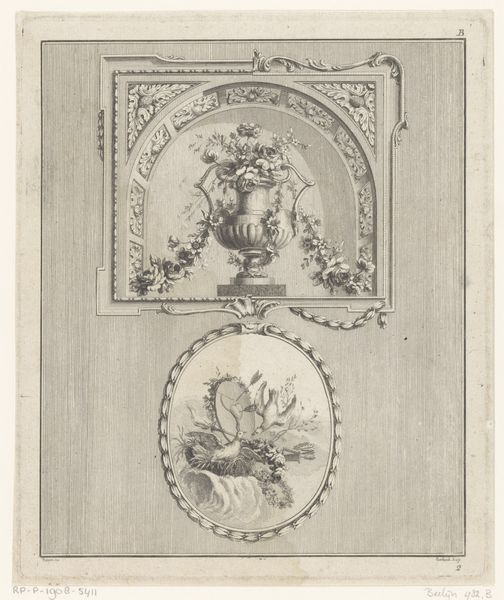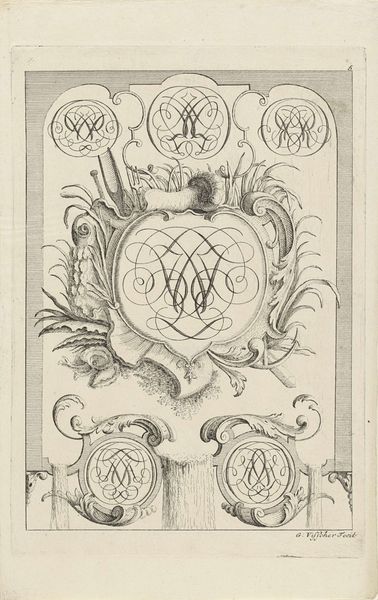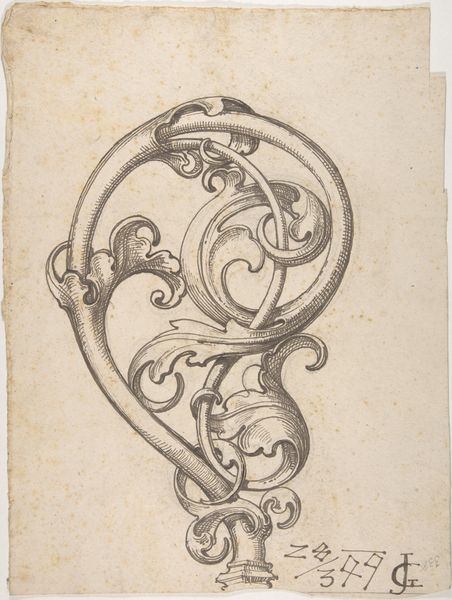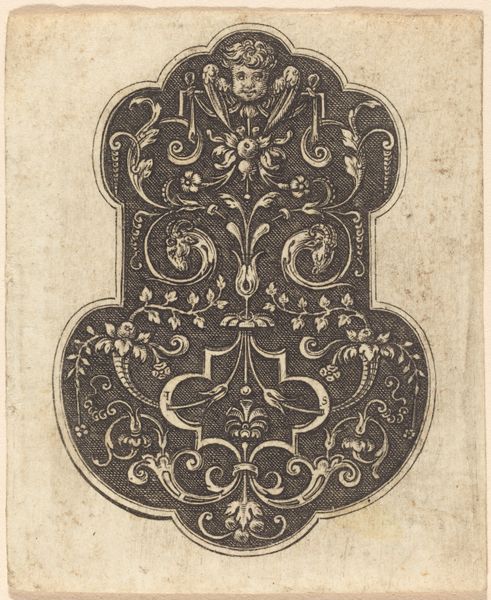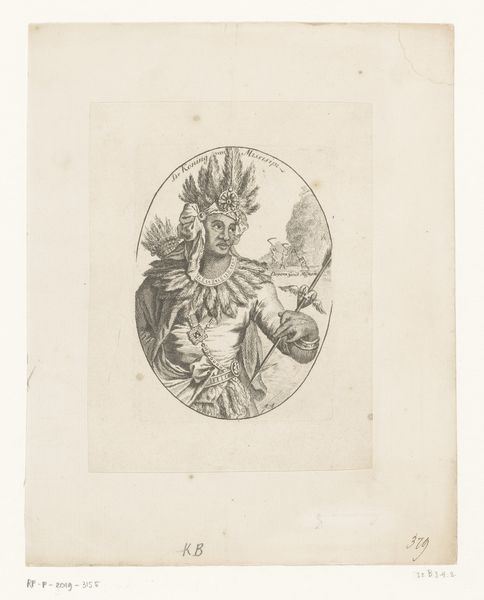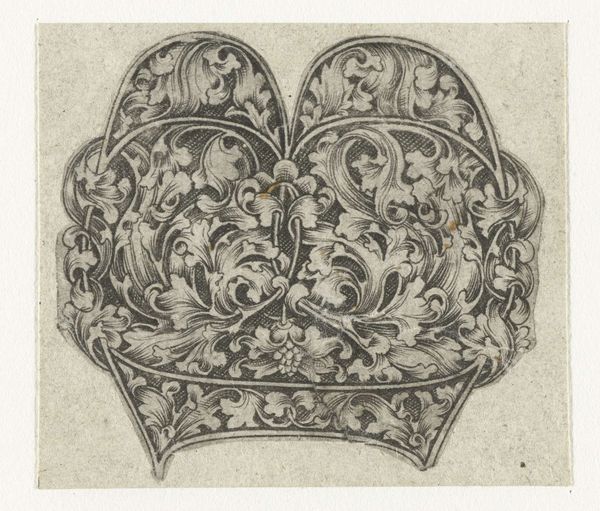
drawing, print, ink, engraving
#
drawing
# print
#
ink
#
geometric
#
line
#
engraving
Dimensions: height mm, width mm
Copyright: Rijks Museum: Open Domain
This is Jan Brandes’s ‘Family Coat of Arms with Rose’. Though undated, the heraldic emblem was likely made in the late 18th century. Heraldry was a visual language employed by elite families across Europe to signify lineage, status, and allegiance. Brandes’s image speaks to the values of the Dutch upper classes at this time. The inclusion of roses might symbolize love or beauty. The heart could stand for courage. The vase of acorns suggests prosperity. But what exactly did it mean to claim nobility in the Dutch Republic? Unlike other European nations, the Dutch had overthrown their monarch in the 16th century. It was a society dominated by merchants, not aristocrats. As such, the ‘nobility’ of Dutch families was often tied to wealth, trade, and civic duty, rather than royal bloodlines. The ‘Family Coat of Arms with Rose’ reminds us that the visual culture of status is always bound up with the particular social conditions of its time. To understand such images better, historians turn to resources such as genealogical records, emblem books, and period guides to social etiquette.
Comments
No comments
Be the first to comment and join the conversation on the ultimate creative platform.
